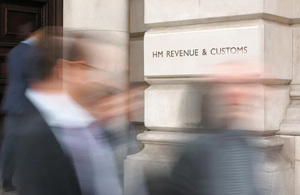HMRC halts thousands of scam text messages
As part of Take Five to Stop Fraud Week, the tax authority explains its work to protect customers from text message scammers.

HM Revenue and Customs (HMRC) has stopped thousands of taxpayers from receiving scam text messages, with 90 percent of the most convincing texts now halted before they reach their phones.
The milestone comes during Take Five To Stop Fraud Week, with the tax authority working to raise awareness of the tell-tale signs of fraud ahead of the Self Assessment deadline.
Fraudsters alleging to be from HMRC send text messages to unsuspecting members of the public. In these messages they will make false claims, such as suggesting they are due a tax rebate. Messages will usually include links to websites that harvest personal information or spread malware. This can in turn lead to identity fraud and the theft of people’s personal savings.
HMRC will never contact customers who are due a tax refund by text message or by email.
Reports of this type of fraud have quickly increased in volume over the last few years. People are 9 times more likely to fall for text message scams than other forms like email because they can appear more legitimate, with many texts displaying ‘HMRC’ as the sender, rather than a phone number.
HMRC, working with public and private partners, began a pilot in April 2017 to combat these messages. The new technology identifies fraud texts with ‘tags’ that suggest they are from HMRC and stops them from being delivered.
Since the pilot began, there has been a 90% reduction in customer reports around the spoofing of these specific HMRC-related tags on SMS and a five-fold reduction in malicious SMS reports. The initiative has helped reduce reports of these scams from over 5,000 in March 2017, before the new programme was introduced, to fewer than 1,000 in December 2017. This progress comes after similar successes in tackling fraudulent emails and websites.
In the last 12 months, HMRC has initiated the removal of 16,000 malicious websites, meaning even if the texts are delivered, the associated phishing website is likely to have been removed.
By introducing technical controls, HMRC has also stopped customers receiving over 300 million emails purporting to come from the tax authority.
HMRC’s Director of Customer Services, Angela MacDonald, said:
HMRC is focused on becoming the most digitally advanced tax authority in the world, and a big part of that relates to keeping our customers safe from online scammers.
As email and website scams become less effective, fraudsters are increasingly turning to text messages to con taxpayers. But as these numbers show, we won’t rest until these criminals are out of avenues to exploit.
We have made significant progress is cutting down these types of crime, but one of the most effective ways to tackle it is still to help the public spot the tell-tale signs of fraud.
HMRC is working with the National Cyber Security Centre to further this work and extend the benefits beyond HMRC customers.
Further information
-
Read more about the Take Five to Stop Fraud campaign
-
Follow HMRC’s press office on Twitter @HMRCpressoffice.
-
To help HMRC’s investigations we ask people to forward details of the text message to 60599 (network charges apply) or email phishing@hmrc.gsi.gov.uk before deleting.
-
More information on how to spot bogus HMRC correspondence and examples can be found on GOV.UK.
For press enquiries only, please contact:
- Ed Rowley: telephone: 03000 585 028
- email: Edward.Rowley@hmrc.gsi.gov.uk
- out-of-hours: telephone: 07860 359544